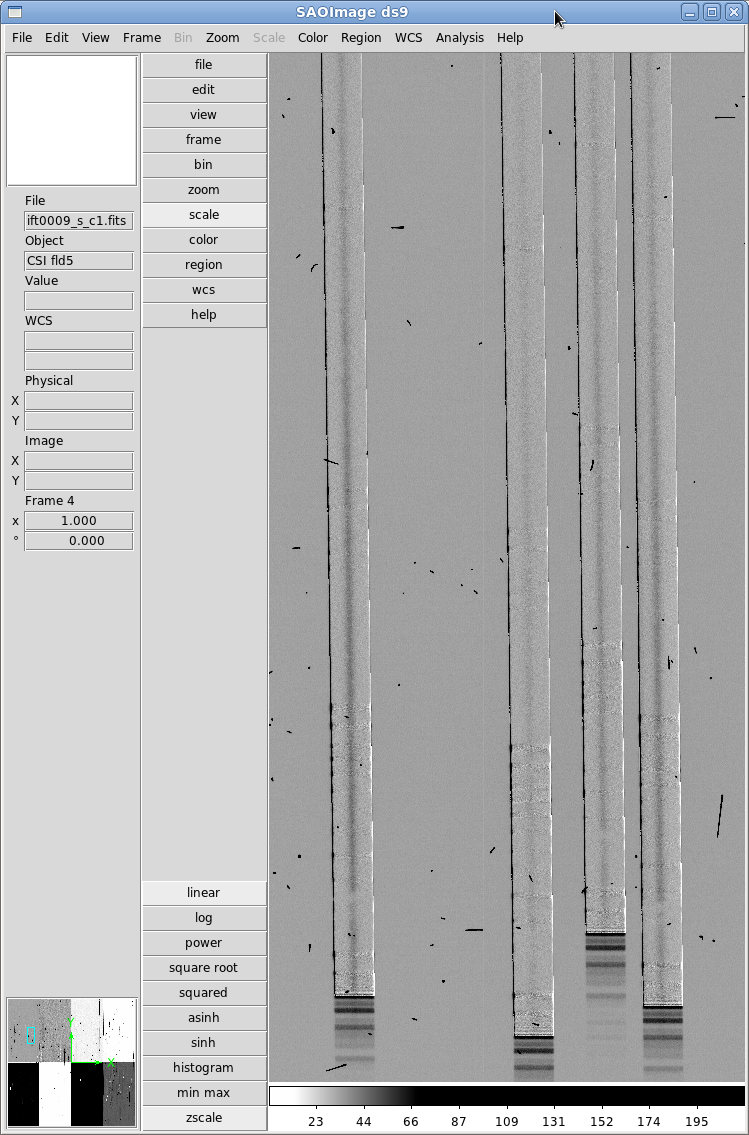sky-subbing.html
Run Sky-Subtraction on the Science Exposures
As usual, we take a look at the parameter file first:
editpar subsky ./subsky.par type q to end minlambda 4800.000000 min wavelength of extraction maxlambda 7800.000000 max wavelength of extraction exclude 5 half width of exclusion region deltaknot 1.000000 dispersion knot interval, in pixels splineorder 3 order of dispersion spline fit to sky 2d_spline n Perform 2-d spline fit to spectra? medbox 15 boxsize for running median CR rejection siglimit 8.000000 CR rejection threshold in sigmas diag_0 5520.000000 lower limit of diagnostic range diag_1 5620.000000 upper limit of diagnostic range edge 1 excluded edge of spectrum edge2 1 excluded edge of other side objshift 0.000000 number of pixels to shift object position noise 4.100000 CCD read noise gain 0.470000 CCD gainSince these are relatively short slits, we do not need to fit a 2-D spline to the spectra. The parameters deltaknot, medbox, exclude, and edge/edge2 are important for getting an optimal sky fit. Once these look fine, we can run subsky on the science frames.
subsky -m ift0012 -f ift0009_f subsky -m ift0012 -f ift0010_fThese commands generate ift0009_s_cX.fits and ift0010_s_cX.fits, respectively. Figure 9 shows a section of one of the sky-subtracted frames.
Next: Extracting 2-D spectra Up: Reducing the Spectra Previous: Flat-field the Science Exposures Contents
Edward Villanueva 2014-08-27

